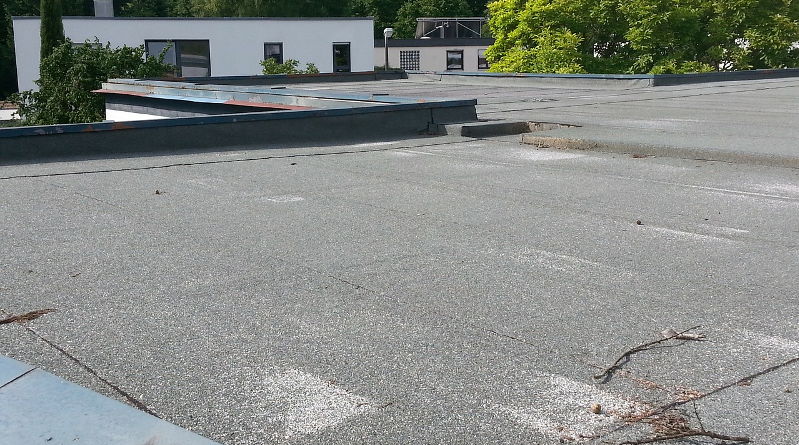Small bubbles, blisters and cracks are a common problems with felted flat roofs. If they are spotted early there is no reason why they need cause serious damage, and no reason for you to replace all of the felting. Check your flat roof as often as possible, particularly at the end of summer and the end of winter as both sun and rain/frost can damage roof felt.
Bubbles and Blisters
It is quite easy to repair bubbles or blisters in a felt roof with a few simple tools and some bitumen (available from all good DIY stores). Blisters or bubbles are caused when water penetrates the felt through a crack or hole and then expands with the heat and lifts the felt away from the roof. If this is left untreated, it can lead to a much bigger problem.
First you need to make two cuts in a X shape through the blister. Peel back the four triangles the cuts have made (use a Hot Air Gun to warm the felt if it is stiff) and let the timber beneath dry for a while. Now liberally coat the area under the cuts with Bitumen adhesive and leave it to become tacky to your touch. When it is, press down the triangles of felt firmly into the bitumen. You can use galvanised nails to hold the points of the triangles down if they refuse to sit flat.
You now need to apply another liberal coat of bitumen all over the cuts. If you have spare roofing felt, cut a square around 100mm bigger than the cuts and lay this into the tacky adhesive. Seal the edges of this with more bitumen and sprinkle the wet bitumen with small solar reflective chippings. If you do not have any roofing felt spare, you can use a small square of self adhesive flashing strip (cheaper to buy than a roll of roofing felt).
Using Liquid Rubber
If your flat roof has developed several small crack and splits, you can treat the whole area with Liquid Rubber. Liquid rubber can be used to cover small or large areas of flat roof and is sold in quantities ranging from 1kg to 20kg. This is a cheaper and easier option than replacing the roof felt, but will not be as long-lasting.
You will need to work out how much of the roof you need to treat and buy the correct amount of liquid rubber according to the manufacturers instructions. The instructions will show you how much is recommended per square metre and it is advisable not to scrimp on the amount used.
Clear away any chippings and dirt from the area you need to treat using a stiff brush. If you reveal a layer of tar-bitumen (this will be black, rough coating) you might need to prime the area with a liquid rubber primer. If so, let this set completely before applying the liquid rubber. Paint on the liquid rubber with a wide, thick brush (a pasting brush is ideal for this) and allow it to dry for the recommended time. It should be dry enough to repel rain after about an hour, but leave it for at least 48 hours to dry completely. Once the liquid rubber is dry, apply a second coat. Once this coat is dry, spread the chippings back over the area to help protect it from the sun and rain.
Learn the best way to repair the felt on a shed roof.







